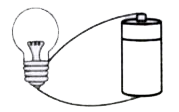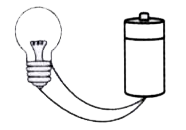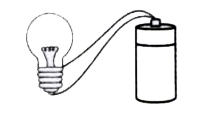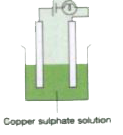(a) How does an incandescent bulb work ?
(b) Why is the resistance of bulb much less when it is not glowing ?
Video Solution
Text Solution
(a) An incandescent bulb (an ordinary bulb) provides light when its filament gets heated due to electric current flowing through it.
(b) The bulb glows when it is heated. We know resistance increases with temperature.
|
Topper's Solved these Questions
- ELECTRICITYBOOK - PRADEEPCHAPTER - ELECTRICITYEXERCISE - (Additional)Long Answer
4 Videos
- ELECTRICITYBOOK - PRADEEPCHAPTER - ELECTRICITYEXERCISE - Based On Practical
10 Videos
- ELECTRICITYBOOK - PRADEEPCHAPTER - ELECTRICITYEXERCISE - (Additional)Very Short Answer
47 Videos
- MAGNETIC EFFECTS OF ELECTRIC CURRENTBOOK - PRADEEPCHAPTER - MAGNETIC EFFECTS OF ELECTRIC CURRENTEXERCISE - Mock Test
21 Videos
Similar Questions
Knowledge Check
In which case does the bulb glow ?
A B
B C
C D
D
A, B, C are identical bulbs. How does the brightness of A and B change when the switch S is closed ?
 AThe brightness of A increases and that of B decreasesBThe brightness of A does not change and that of B decreasesCThe brightness of both A and B decreasesDThe brightness of A increases and that of B does not change
AThe brightness of A increases and that of B decreasesBThe brightness of A does not change and that of B decreasesCThe brightness of both A and B decreasesDThe brightness of A increases and that of B does not changeIn which of these circuits will the bulb glow?
A B
B C
C D
D
How much current will an electric bulb draw from a 220 V source, if the resistance of the bulb filament is 1200Ω?
View SolutionA fused bulb does not glow. Why?
View SolutionBulb in this circuit doesn't glow, why?

View SolutionA wire connected to a bulb does not glow, whereas the filament of the bulb gilows when same current flows through them. Why?
View SolutionA torch bulb when cold has 1Ω resistance. It draws a current of 0.3A when glowing from a source of 3V. Calculate the resistance of the bulb when glowing and explain the reason for the difference in resistance.
View Solution
